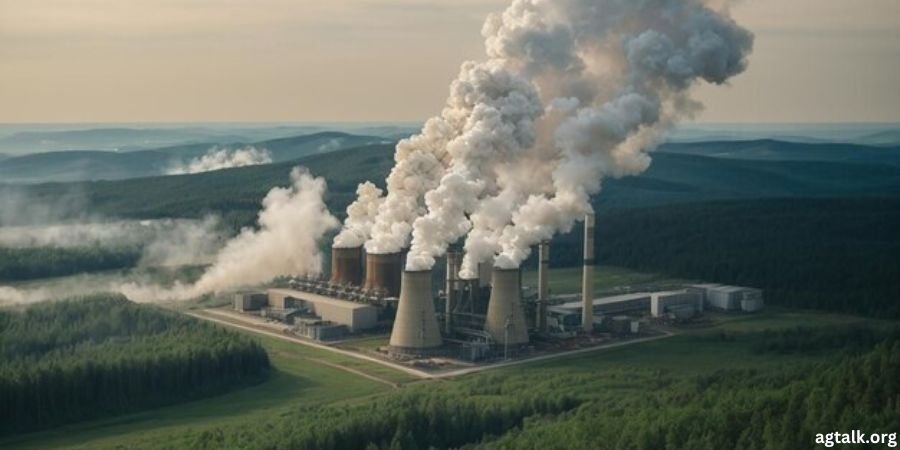Understanding Cảbon: The Essential Element of Life
When you think about what makes life possible on Earth, one of the first elements that come to mind is cảbon. Cảbon is the cornerstone of all known life, and its versatility allows it to form a vast variety of compounds, more than any other element. But what exactly makes cảbon so special, and why does it matter so much in our everyday lives and the environment? Let’s dive deep into the world of carbon to uncover its secrets and significance.
What is Cảbon?
Cảbon, symbolized as ‘C’ with an atomic number of 6, is a nonmetal element that is essential for all living organisms. It has the unique ability to form stable bonds with many elements, including itself, which results in a vast array of compounds.
The Role of Cảbon in the Periodic Table
Situated in group 14 of the periodic table, cảbon is known for its ability to create long chains and complex structures. This property is the foundation of organic chemistry, the study of carbon-containing compounds.
The Allotropic Forms of Cảbon
Diamond: The Hardest Natural Substance
Diamonds are renowned for their unparalleled hardness and brilliance. They are an allotrope of carbon where each carbon atom is tetrahedrally bonded to four other carbon atoms, forming a rigid three-dimensional lattice.
Graphite: The Soft, Lubricant Allotrope
Unlike diamonds, graphite is soft and slippery. This allotrope consists of layers of carbon atoms arranged in hexagonal patterns, which can slide over each other easily. This makes graphite an excellent lubricant and a crucial component in pencils.
Amorphous Cảbon: Charcoal and Soot
Amorphous carbon doesn’t have a crystalline structure. Charcoal, soot, and carbon black are common examples. These forms of carbon are used in various applications, from fuel to pigmentation.
Fullerene and Graphene: The Modern Wonders
Fullerenes are molecules composed entirely of carbon, taking the form of hollow spheres, ellipsoids, or tubes. Graphene, a single layer of carbon atoms arranged in a two-dimensional honeycomb lattice, is celebrated for its extraordinary strength and electrical conductivity.
The Carbon Cycle
Carbon in the Atmosphere
Carbon dioxide (CO2) is a critical greenhouse gas present in the atmosphere. It plays a vital role in regulating Earth’s temperature through the greenhouse effect.
Photosynthesis and Respiration
Plants absorb CO2 during photosynthesis, converting it into oxygen and glucose. Animals, in turn, consume these plants, utilizing the glucose for energy and releasing CO2 back into the atmosphere through respiration.
Oceanic Cảbon
Oceans are significant carbon sinks, absorbing large amounts of CO2 from the atmosphere. Marine organisms use this carbon to form calcium carbonate shells, which eventually become sedimentary rock.
Fossil Fuels and Cảbon Sequestration
The burning of fossil fuels releases stored carbon into the atmosphere, contributing to global warming. Carbon sequestration involves capturing and storing atmospheric CO2 to mitigate climate change.
Cảbon in Organic Chemistry
The Backbone of Organic Molecules
Carbon’s ability to form four covalent bonds makes it the backbone of organic molecules. This includes everything from simple hydrocarbons to complex biomolecules like proteins and DNA.
Hydrocarbons and Their Importance
Hydrocarbons, compounds composed solely of hydrogen and carbon, are the primary constituents of fossil fuels. They are vital for energy production and as raw materials in the chemical industry.
Functional Groups in Organic Compounds
Functional groups are specific groupings of atoms within molecules that dictate how those molecules behave. In organic chemistry, carbon forms the framework for these groups, such as hydroxyl, carboxyl, and amino groups, which are crucial in biological processes.
Cảbon in Everyday Life
Carbon-Based Materials: From plastics to synthetic fibers, carbon-based materials are ubiquitous in modern life. These materials have transformed industries and everyday products.
Carbon in Food and Beverages: Carbon compounds are fundamental in food chemistry. Carbohydrates, proteins, and fats, all containing carbon, are essential nutrients. Carbon dioxide is also used to carbonate beverages.
The Environmental Impact of Cảbon
A carbon footprint measures the total greenhouse gases emitted by human activities, usually expressed in equivalent tons of CO2. Reducing our carbon footprint is crucial for mitigating climate change.
Greenhouse Gases and Climate Change
CO2 is a major greenhouse gas, trapping heat in the Earth’s atmosphere and contributing to global warming. The increasing concentration of CO2 due to human activities is a significant driver of climate change.
Mitigation Strategies
To combat climate change, strategies such as reducing fossil fuel use, increasing energy efficiency, and investing in renewable energy sources are essential. Carbon capture and storage technologies are also being developed to reduce atmospheric CO2 levels.
Innovations and Future of Cảbon
Cảbon Nanotubes and Their Applications
Cảbon nanotubes are cylindrical molecules with extraordinary strength and electrical properties. They have potential applications in electronics, materials science, and medicine.
Graphene: The Material of the Future
Graphene, a single layer of carbon atoms, is celebrated for its exceptional strength, conductivity, and flexibility. It holds promise for revolutionizing various industries, from electronics to energy storage.
Cảbon Capture and Storage Technologies
Advanced technologies are being developed to capture and store CO2 from the atmosphere and industrial processes. These technologies aim to reduce greenhouse gas concentrations and mitigate climate change impacts.
FAQs about Cảbon
1. What are the main forms of cảbon?
The main forms of carbon are diamond, graphite, amorphous carbon (such as charcoal and soot), and the more recently discovered fullerenes and graphene.
2. How does cảbon impact the environment?
Cảbon impacts the environment significantly through its role in the carbon cycle and as a greenhouse gas. CO2 emissions from human activities contribute to global warming and climate change.
3. What is the cảbon cycle?
The Cảbon cycle is the process by which carbon moves through the atmosphere, biosphere, hydrosphere, and lithosphere. It includes processes like photosynthesis, respiration, and the formation and burning of fossil fuels.
4. Why is cảbon essential for life?
Cảbon is essential for life because it forms the backbone of organic molecules, including DNA, proteins, and carbohydrates. Its ability to form stable bonds with many elements allows for the complexity necessary for life.
5. What are cảbon nanotubes used for?
Cảbon nanotubes are used in various applications due to their strength and electrical properties, including in electronics, materials science, medicine, and as additives to improve the properties of other materials.
Conclusion
Cảbon is not just an element; it’s the essence of life and a cornerstone of the modern world. From its fundamental role in biology to its impact on the environment and potential for future innovations, understanding carbon is crucial for addressing many of today’s global challenges. The future of carbon research holds promise for sustainable solutions and technological advancements that could reshape our world.
Explore popular topics and discussions:
- Ỏganic Living: The Complete Guide to Health and Sustainability
- Understanding Mıllıeyt: A Comprehensive Guide
- Llaquichan: Unraveling the Mysteries of Andean Heritage
- Nnevelpappermann Leaks: A Deep Dive into the Scandal
- Dönrt Unveiled: A Deep Dive into Its Cultural Significance
Share this content:














Post Comment